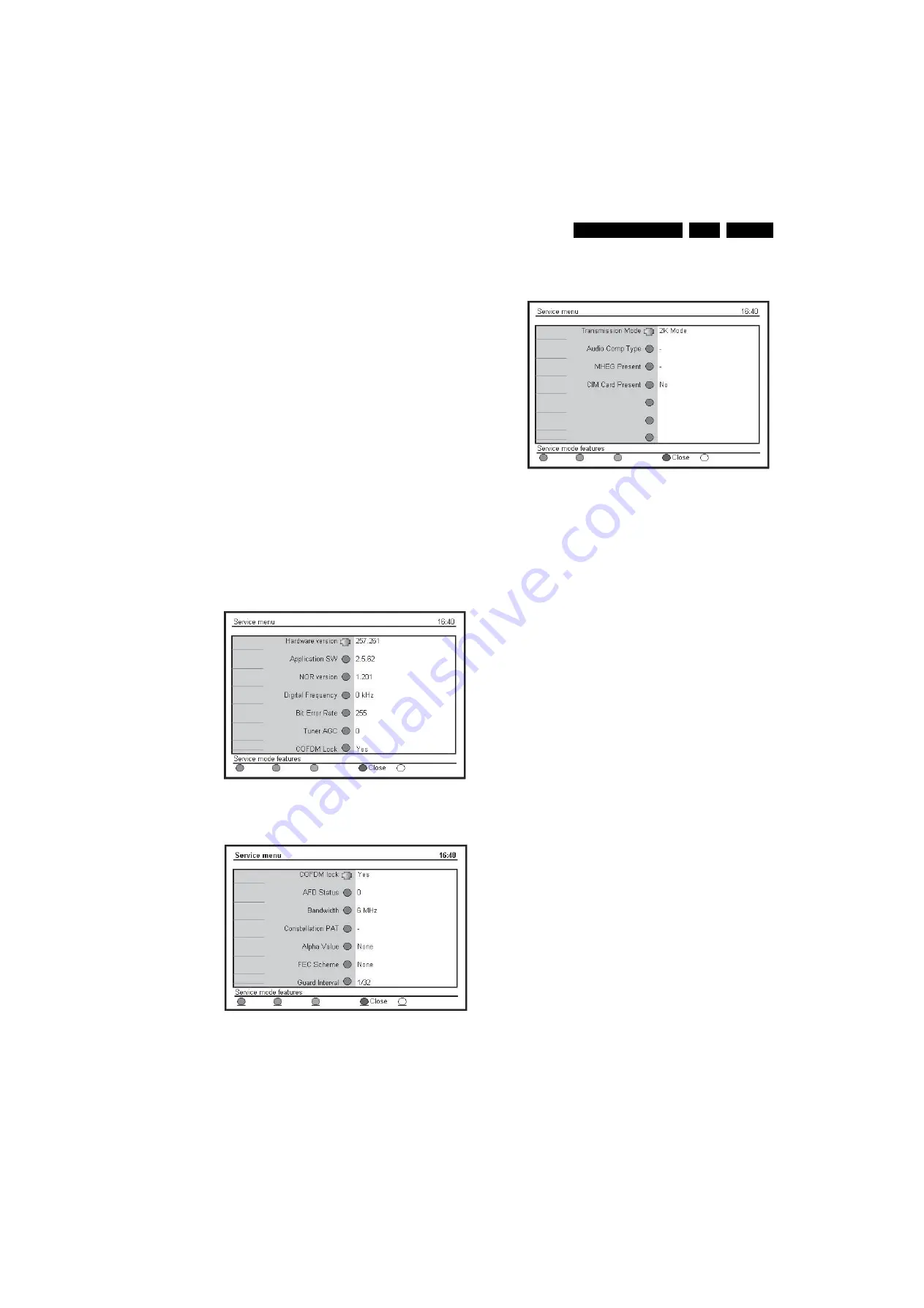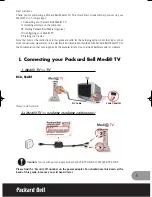
Service Modes, Error Codes, and Fault Finding
5.
5.
Service Modes, Error Codes, and Fault Finding
Index of this chapter:
5.1 Service Modes IBO Zapper Module
5.2 Error Codes IBO Zapper Module
5.1
Service Modes IBO Zapper Module
5.1.1
Digital Customer Service Mode (DCSM)
Purpose
The DCSM is only available in “digital” mode, so enter this
mode with the “A/D” button on the Remote Control.
This mode shows information on the IBO Zapper module
settings, and helps the call centre to diagnose problems and
failures in the IBO Zapper module before making a service call.
The DCSM is a read only mode, therefore, modifications in this
mode are not possible.
How to Activate DCSM
Use the following method:
1.
Press the “Digital” menu button on the Remote Control to
activate the digital user menu (“Setup”).
2.
Activate the “Information” sub menu (select “Information”
via the “DOWN” and “UP” cursor buttons and then activate
the menu by pressing cursor “RIGHT”).
3.
In the “Information” sub menu, press the following buttons
on the RC to activate the DCSM: “GREEN - RED -
YELLOW - 9759”. Now, the “Service menu” will appear.
Figure 5-1 DCSM menu (1)
Figure 5-2 DCSM menu (2)
Figure 5-3 DCSM menu (3)
Note:
It is not possible to activate DCSM in “analogue” mode
(see Customer Service Mode in the paragraph above).
How to Navigate through DCSM
Use the arrow UP/DOWN buttons on the remote control to go
to the next or previous DCSM screen (if applicable).
Menu Explanation
•
Hardware version.
This indicates the version of the IBO
Zapper module hardware.
•
Application SW.
The application software version.
•
NOR version.
The NOR Flash image version.
•
Digital Frequency.
The digital frequency where the TV is
tuned to.
•
Bit Error Rate.
The error rate is measured before the error
correction algorithm circuitry. This gives an impression of
the signal quality.
•
Tuner AGC.
The tuner AGC value. This gives an indication
of the signal strength.
•
COFDM Lock.
Indication if the COFDM decoder is locked.
•
AFD Status.
Status of the Active Picture Format Descriptor
(e.g. 4x3, 16x9, ...). This item changes with the aspect
ratio.
•
Bandwidth.
The bandwidth of the received signal.
Possible values are 6, 7, or 8 MHz.
•
Constellation Pattern.
Displays the signal constellation.
Possible values are QPSK, 16-QAM, or 64-QAM.
•
Alpha Value.
Displays the Alpha Value. Possible values
are 0, 1, 2, or 4. This value is not used yet.
•
FEC Scheme.
Displays the Forward Error Correcting
Scheme. Possible values are 1/2, 2/3, 3/4, 5/6, or 7/8. E.g.
2/3 means that per 2 incoming bits there are 3 outgoing
bits.
•
Guard interval.
For digital signals the time that the info is
being sent is followed by an empty interval. This is done to
cope with reflections in the signal. Possible values are 1/4,
1/8, 1/16, or 1/32.
•
Transmission Mode.
Displays the transmission mode.
This is the number of carriers that is used. Possible values
are 2k (UK) or 8k (other countries).
•
Audio Comp Type.
Type of detected audio stream.
•
MHEG present.
Indicates if MHEG is present or not.
•
CIM card present.
Indicates if the CIM card is present or
not.
How to Exit
Press the BLUE button on the remote control to exit DCSM.
The DCSM is a read only mode, therefore, modifications in this
mode are not possible.
E_14970_040.eps
090904
E_14970_041.eps
100904
E_14970_042.eps
090904






































